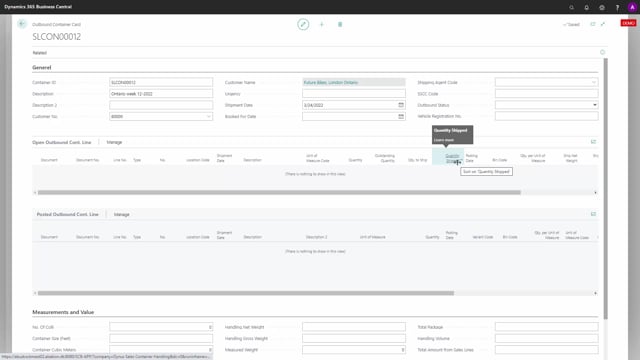
In the sales container handling and outbound container is to be understood as one shipment.
This means when I have different containers in here, they all represent one shipment.
So when I create a new container code, I could name it with a description like when am I going to send it, and where would I send it to or I could add whatever description I would like here, but this is understood as one container. So the container ID is not the ID printed on the container.
This is a fault running number from a number series that you set up. So each time you create a new container, it will just increase this number.
So the actual ID on a container if you have that would be in the vheicle registration number in here that could be for truck or for a container serial number or whatever is entered on the container.
So for each container you want to ship, you create one container card where you can attach sales orders and transfer order lines to it and when it’s posted, it will be of course closed container and you can see everything that is posted on it. So one container, one shipment.

